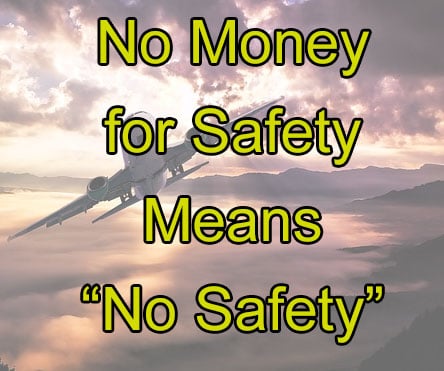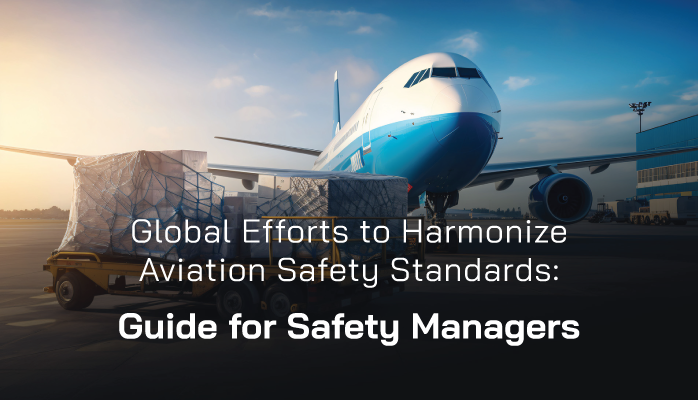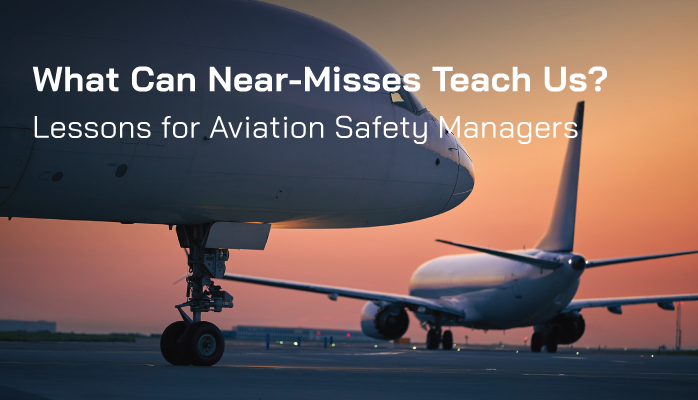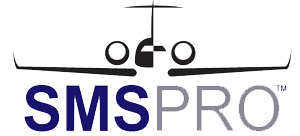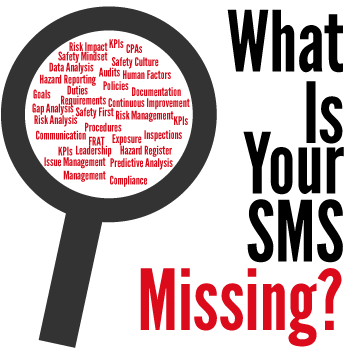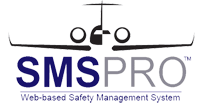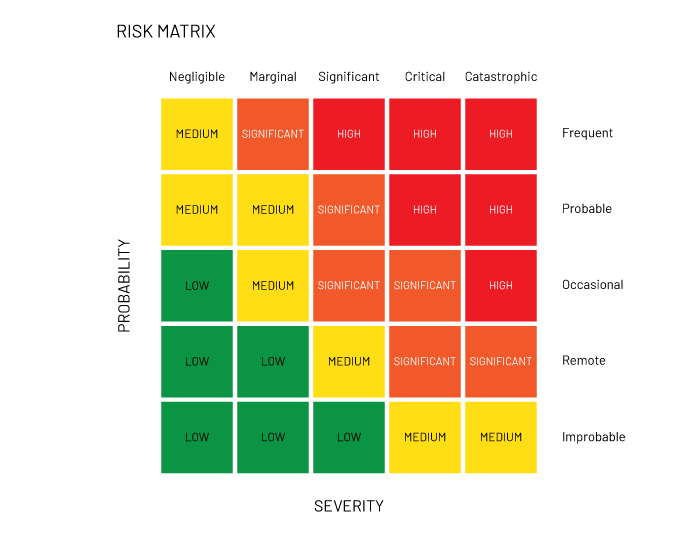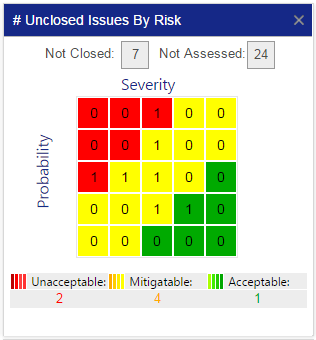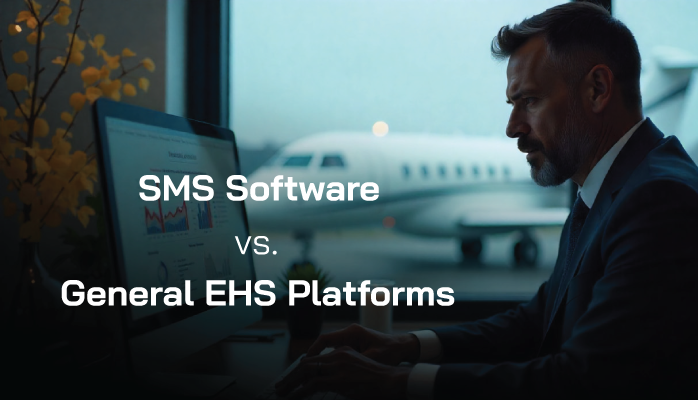In November 2025, NorthWest Data Solutions (NWDS) submitted a financial proposal for SMS Pro, its flagship Safety Management System platform, to a complex Southeast Asian aviation group operating scheduled airline, cargo airline, MRO facilities, a Part 141 flight school, seaplane services, and five airports. The quoted SMS database software cost three to ten times higher than every global competitor in the aviation SMS database space.
Christopher Howell

Recent Posts
2026 Most Expensive Aviation SMS Software May Dominate Market
Global Efforts to Harmonize Aviation Safety Standards: Guide for Safety Managers
Global Efforts to Harmonize Aviation Safety Standards
In the fast-evolving aviation industry, ensuring consistent safety standards across borders is critical. As aviation safety managers, you play a pivotal role in navigating the complexities of global regulations and fostering a culture of safety.
This article explores the ongoing global efforts to harmonize aviation safety standards, their implications, and actionable insights to enhance compliance and safety in your organization. This guide aims to inform and empower you to align with international best practices.
Topics: 1-Safety Policy
How Regulations Shape Aviation Safety: A Guide for Safety Managers
How Regulations Shape Aviation Safety
Aviation safety is a cornerstone of the industry, ensuring millions of passengers and crew members reach their destinations securely each year.
For aviation safety managers, understanding the intricate relationship between regulations and safety outcomes is critical. Regulations set the framework for operational standards, but their impact—both positive and challenging—requires careful navigation to maintain safety while fostering efficiency.
This article explores how regulations influence aviation safety, offering insights for safety managers to optimize compliance and enhance safety protocols.
Topics: 3-Safety Assurance, FAA Compliance
What Can Near-Misses Teach Us? Lessons for Aviation Safety Managers
Near-Misses Lessons for Aviation Safety Managers
Aviation is one of the safest modes of transportation, yet the margin for error remains razor-thin. In 2023, the Federal Aviation Administration (FAA) recorded 503 significant air traffic control lapses, a 65% increase from the previous year, despite only a 4% rise in air traffic (New York Times).
These incidents, known as near-misses, are events where an accident was narrowly avoided—perhaps by
- a pilot’s quick decision,
- an air traffic controller’s alertness, or
- sheer luck.
Comparing FOQA and ASAP: Strengthening Aviation SMS for Safety Managers
Aviation safety hinges on proactive risk management, and Safety Management Systems (SMS) provide the framework to achieve this. Within the aviation SMS ecosystem, two voluntary programs—Flight Operational Quality Assurance (FOQA) and Aviation Safety Action Program (ASAP)—play pivotal roles in enhancing safety.
These programs, widely adopted in the U.S. under the Federal Aviation Administration (FAA) and aligned with global standards like those of the International Civil Aviation Organization (ICAO), offer unique approaches to hazard identification and risk mitigation.
Topics: 4-Safety Promotion, 3-Safety Assurance, 2-Safety Risk Management, Risk Management Training, FAA Compliance
Best Aviation SMS Features for Managing FAA, ICAO, and EASA Requirements
Managing FAA, ICAO & EASA Requirements
Aviation Safety Management Systems (SMS) must align with the core frameworks of the FAA (14 CFR Part 5), ICAO (Annex 19), and EASA (integrated into domain-specific regulations like Part-OPS, Part-145, and Part-21). These bodies emphasize the four pillars of SMS:
- Safety Policy,
- Safety Risk Management,
- Safety Assurance, and
- Safety Promotion
Topics: Aviation SMS Implementation, Aviation SMS Database, Risk Management Software, Safety Culture
Comparing ICAO, FAA, and EASA SMS Standards: A Guide for Aviation Safety Managers
In the fast-paced world of aviation, ensuring safety is paramount. The aviation Safety Management System (SMS) has emerged as a critical tool for managing safety risks systematically, helping organizations proactively identify hazards and mitigate risks.
Three key regulatory bodies—the International Civil Aviation Organization (ICAO), the Federal Aviation Administration (FAA), and the European Union Aviation Safety Agency (EASA)—each provide SMS standards that guide aviation safety practices. While these standards share a common goal of enhancing safety, they differ in their approach, applicability, and specific requirements.
Topics: 4-Safety Promotion, 3-Safety Assurance, 1-Safety Policy, 2-Safety Risk Management, FAA Compliance
FAA Part 5 Compliance: 10 Steps to Document Risk Level Actions
For new aviation safety managers, documenting a safety management system (SMS) is a critical yet daunting task, especially when it comes to the risk matrix. The risk matrix is a cornerstone of aviation safety risk management, categorizing risks by severity and likelihood to guide decision-making.
To meet Federal Aviation Administration (FAA) compliance requirements under 14 CFR Part 5, safety managers must document specific actions for each risk level (e.g., low, medium, high) to ensure hazards are mitigated effectively.
This evergreen guide provides a step-by-step approach to documenting these actions, helping new safety managers create clear, FAA-compliant SMS documentation that enhances safety and streamlines audits.
Topics: Aviation SMS Implementation, 2-Safety Risk Management, Risk Management Training, FAA Compliance
Master Residual Risk in Aviation SMS: 10 Steps to Document
For new aviation safety managers, creating effective safety management system (SMS) documentation can be a daunting task, especially when it comes to residual risk.
Residual risk—the risk that remains after mitigation measures are applied—is a critical component of aviation safety risk management. Properly identifying and documenting residual risk ensures compliance with Federal Aviation Administration (FAA) regulations, enhances operational safety, and prepares organizations for audits.
This evergreen guide provides a step-by-step approach to help aviation safety managers master this process, even if they’re starting from scratch.
Topics: Aviation SMS Implementation, 2-Safety Risk Management, Risk Management Training, FAA Compliance
SMS Software vs. General EHS Platforms: Why Aviation Needs Specialization
Aviation Needs Specialization
From airlines to maintenance, repair, and overhaul (MRO) organizations, adhering to rigorous safety standards is critical. This is where Safety Management Systems (SMS) come into play, mandated by the International Civil Aviation Organization (ICAO) and regulators like the FAA and EASA.
Topics: Aviation SMS Database, Risk Management Software, Risk Management Training, Quality-Safety Management
Site content provided by Northwest Data Solutions is meant for informational purposes only. Opinions presented here are not provided by any civil aviation authority or standards body.
